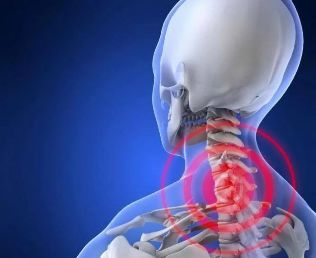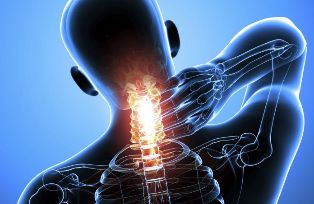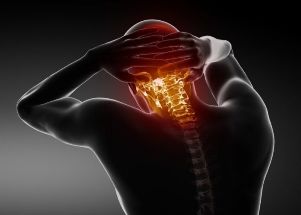The leading positions in the list of the most common diseases of the 21st century are without exception occupied by diseases of the spine. The first line, in most cases, belongs to the diagnosis: osteochondrosis of the cervical spine - a dangerous disease that requires the mandatory intervention of experienced doctors.
The disease does not spare anyone, neither women nor men (clinical cases of cervical osteochondrosis in men are registered less than in women, but do occur). In addition, the disease "gets younger" every year. Today, signs of cervical osteochondrosis can be seen not only in people who have passed the age limit of 40, but also in people who just celebrated their 25th birthday yesterday.
What is osteochondrosis of the cervical spine, what serves as a catalyst for the onset of the development of this disease, why an epidemic called osteochondrosis of the cervical vertebrae is gaining traction, what symptoms of cervical osteochondrosis should be a reason to visit a medical facility, such asyou are not at risk and have a chance to get rid of cervical osteochondrosis forever? For those looking for answers to these questions, this article is intended. So first things first.

General information about the disease
This disease can be characterized in one word - dystrophy. It arises against the background of changes in the chemical composition of bone and cartilage tissue and leads to a loss of elasticity and strength due to elements of the spine (intervertebral discs). Their structure changes, first the outer layer (annulus fibrosus) is destroyed, then the inner layer (nucleus pulposus). A disc (fiber cartilage) that has completely lost its properties can be deformed, overgrown with growths (osteophytes) and displaced.
Discs, which change shape, size, and position, pinch either nerve roots (they can injure any of the 8 pairs of spinal nerves in this area) or blood ducts (arteries, responsible for nourishing the brain, pass through this area). . . . Both in the first and in the second case, the symptoms of osteochondrosis of the cervical spine are clearly noticeable.
Cervical osteochondrosis is the most common diagnosis that a neurologist or vertebrologist must make to his patients. Osteochondrosis of the cervical vertebra, the most common reason for a doctor's visit, is a consequence of two reasons:
- Anatomical features. The vulnerability of the upper part of the ridge is related to the miniature and fragility of its connecting elements (vertebrae, intervertebral discs).
- Heavy loads. The neck is responsible for mobility and stability at the same time. This can only cause rapid "wear and tear" of the weak links.
Therefore the question arises: Is cervical osteochondrosis treated?
Causes of the disease
Before going to the point: how to cure cervical osteochondrosis, you should understand the causes of its occurrence and try to exclude factors that can trigger the onset of its development.

It is not possible to make a complete list of the catalysts, but it is entirely possible to outline the moments that can prevent the signs of osteochondrosis of the cervical spine from keeping you waiting.
The main causes of osteochondrosis:
- unhealthy diet (snacks on the run, fast food, lack of a regime and fully balanced diet in the diet - this is a direct route to the depletion of cartilage and bone tissue that is not receiving enough trace elements and vitamins necessary for its healthsupport);
- sedentary lifestyle (another possible option is lack of physical activity, stagnation of the crest elements and lack of oxygen supply to tissues);
- genetic predisposition (in this case, you can ask your parents what to do about cervical osteochondrosis. They will learn how to get rid of osteochondrosis of the cervical spine and how this disease is manifested).
- past injuries (the need for information about what is cervical osteochondrosis can also occur if the development of this disease is due to a dislocation or rupture of the intervertebral discs as a result of an injury);
- infectious or inflammatory diseases of the vascular system (in the first case information on the topic: treatment of osteochondrosis of the cervical spine due to a lack of nutrients that support the cartilage tissue, in the second case due to autoimmune and necrotic processes, the joints, vertebrae and bonesdestroy hard drives).
The instability of the hormonal background caused by obesity or stressful situations, as well as incorrect posture (scoliosis) are two more reasons to get acquainted with the materials of the case: is it possible to cure osteochondrosis of the cervical spine?
Signs of illness
The causes of cervical osteochondrosis are well known. The work on the bugs is done. Now the most important thing is not to overlook the symptoms of osteochondrosis of the neck (in case the risk factors were eliminated too late and the disease is already beginning to manifest). The sooner they are diagnosed, the easier and faster the path to recovery will be.
For the sake of simplicity, it is useful to divide all signs of the disease into two groups. This can be done based on the main criterion: origin.
The first group is the phenomenon, the occurrence of which is caused by the clamping of the blood arteries (caused by vascular changes). Compressed channels for blood transport, saturated with oxygen and nutrients, cannot fully do their job. The parts of the brain do not receive enough nutrition and lose some of their functionality.

The second group consists of symptoms, the manifestation of which is associated with pinched nerve endings (caused by neurological changes). In most cases, the vagus nerve (which coordinates the state of the esophagus, pharynx and larynx), the phrenic nerve (responsible for the heart rate and the regulation of the respiratory process), as well as nerve endings innervating other organs of the internal structure, suffer from deformation, destructionand mixing of intervertebral discs and vertebrae.
More detailed information on how not to miss the first "bells" of the disease in osteochondrosis of the cervical spine and timely use of the help that the attending physician can offer can be found in the table below.
Disease symptoms
| origin | manifestations |
|---|---|
| Changes in the state of the vascular system | dizziness, fainting lack of coordination memory impairment reduced concentration of attention loss of visual acuity and hearing black dots in front of the eyes ringing, tinnitus apathy, depression panic attacks nausea, vomiting |
| Neurological changes | Pain in the neck, in the temples, in the back of the head (constant, paroxysmal) Pain radiating to the arm, shoulder, interscapular region and chest Shortness of breath, shortness of breath, suffocation Pressure, tightness in the chest, angina lump in the throat, difficulty swallowing, dryness, itching in the throat |
Important! If at least one symptom from the table above appears, an urgent examination is needed and treatment for osteochondrosis of the cervical spine begins. Any other behavior can have more serious consequences that cannot be cured without surgical intervention!
Complex therapy
How to treat cervical osteochondrosis sounds like the sore question. The answer to this is clear: with the help of complex therapy prescribed by a competent qualified doctor.
Fighting this disease requires discipline from the patient and strict adherence to the recommendations of a specialist. In most cases, osteochondrosis of the cervical spine can be cured simultaneously with the help of several methods of traditional and alternative medicine (only the doctor coordinating the patient can establish a specific program for the effective treatment of cervical osteochondrosis).
He usually chooses techniques from the following list:
Movement therapy

Physiotherapy is an excellent health therapy tool that can both cure osteochondrosis of the cervical spine and improve general health. It solves several problems at once:
- normalizes blood circulation;
- accelerates metabolic processes;
- relieves pain syndrome;
- strengthens the muscle corset;
- discharges the spine;
- charges with happiness and optimism.
There are a number of rules that explain how, by properly charging, cervical osteochondrosis can be eliminated without making the situation worse. You are reading:
- The exercises should be selected by a specialist who has an idea of the general clinical picture (age, chronic diseases and characteristics of the patient).
- Discomfort during class should become a reason for refusing gymnastics (at least before consulting a doctor), as well as a phase in which the disease is exacerbated.
- Sudden movements that are too active are completely excluded, you must do it carefully and without hurry;
- Exercise should be done regularly (exercising from time to time will not solve the problem).
Massage (manual therapy)
Is there any other way to cure cervical osteochondrosis? Quite. All it takes to activate the body's regenerative properties, relieve spasms, release nerve roots, pinch arteries, and relieve symptoms are the skilled hands of an excellent massage therapist or manual.
General guidelines are as follows:
- The procedure must be carried out by a specialist with appropriate training and experience.
- exposure time for the problem area - no more than 35 minutes;
- Duration of a course (without interruption) - no more than 12 sessions;
- Changes in the patient's condition must be known to the doctor treating them.
Important! A massage for osteochondrosis or a therapist's office - a manual with contraindications is strictly prohibited!
Physiotherapy

This area of clinical medicine has found its own answer to the question: how to get rid of osteochondrosis? She suggests using the healing properties of various phenomena, including:
- high-frequency sound waves (ultrasound);
- mechanical vibrations (vibrations);
- electrical currents of different intensity (electrophoresis, UHF);
- ultraviolet radiation (quartz);
- other physiotherapy techniques.
These methods contribute to the onset of positive dynamics. They normalize blood flow, relieve inflammation, relieve pain, make it easier to administer drugs, and shorten the time it takes for them to be absorbed by tissues.
Medicines
How do you deal with cervical osteochondrosis, which continues to progress despite all attempts to stop this process? Only with the help of drugs designed to eliminate the causes of this phenomenon.
All medicines used in an integrated approach are divided into several groups depending on the actions taken. The following table will help clarify the situation.
Medicines
| group | Action | |
|---|---|---|
| Analgesics, NSAIDs | Pain relief, Elimination of the inflammatory process |
|
| Muscle relaxants |
Relief of muscle cramps | |
| Chondroprotectors | Activation of the tissue regeneration function, restoration of the structure of intervertebral discs, vertebrae, joints |
|
| Vitamins and minerals |
Stimulation of metabolic processes, activation of the protective properties of the body, improved microcirculation, strengthening of the immune system, |
The specialist decides for himself how osteochondrosis of the neck should be treated. It can complement therapy with drugs belonging to the group of vasodilators (to relieve vasodilators), antidepressants (to relieve nerve tension), and others, depending on the overall clinical picture of the disease.
In summary, we can clearly answer the main question: Is osteochondrosis treated? Yes, but only under the strict supervision of a competent doctor and with the great desire of the patient himself!





































